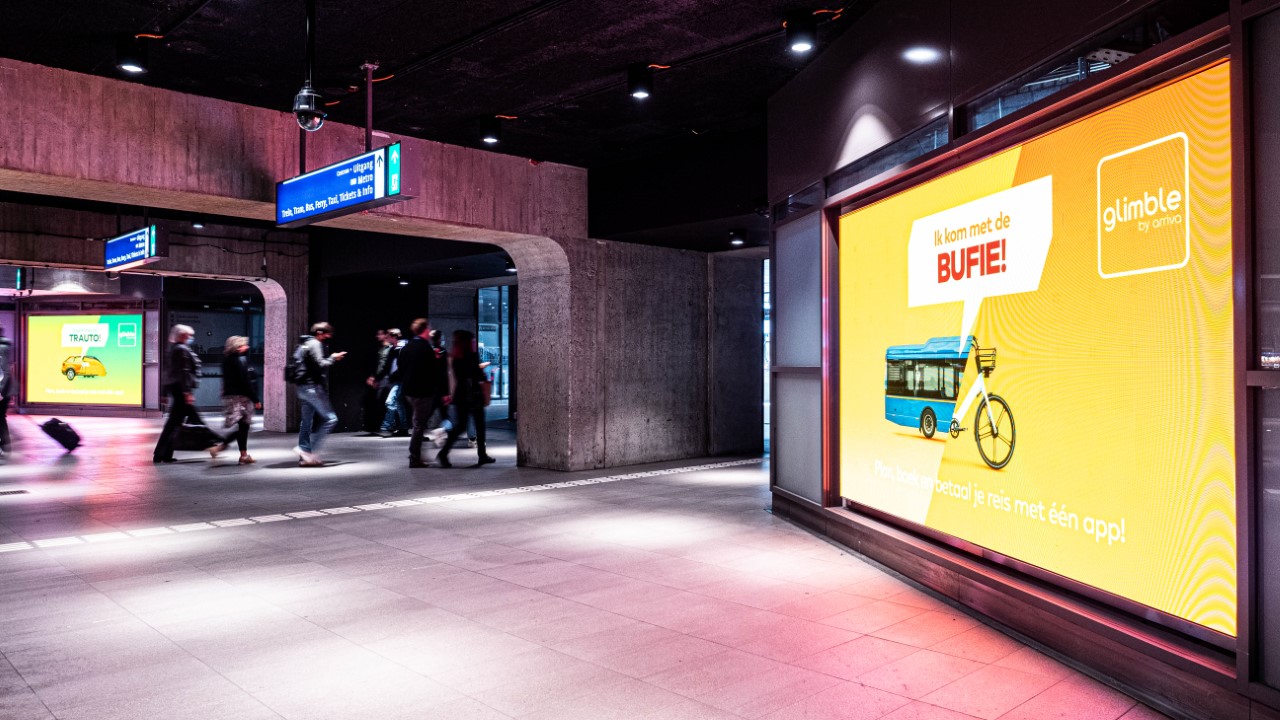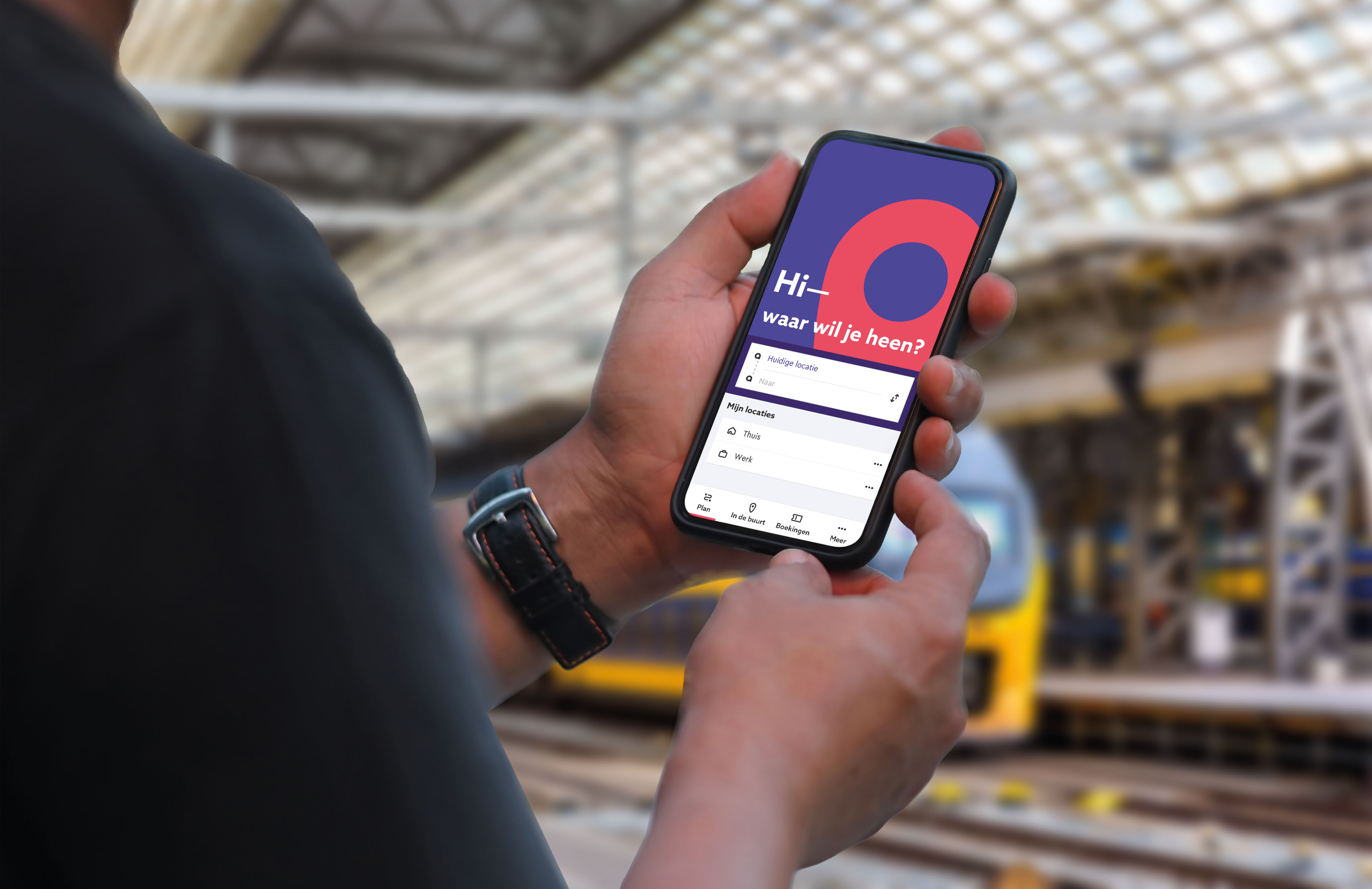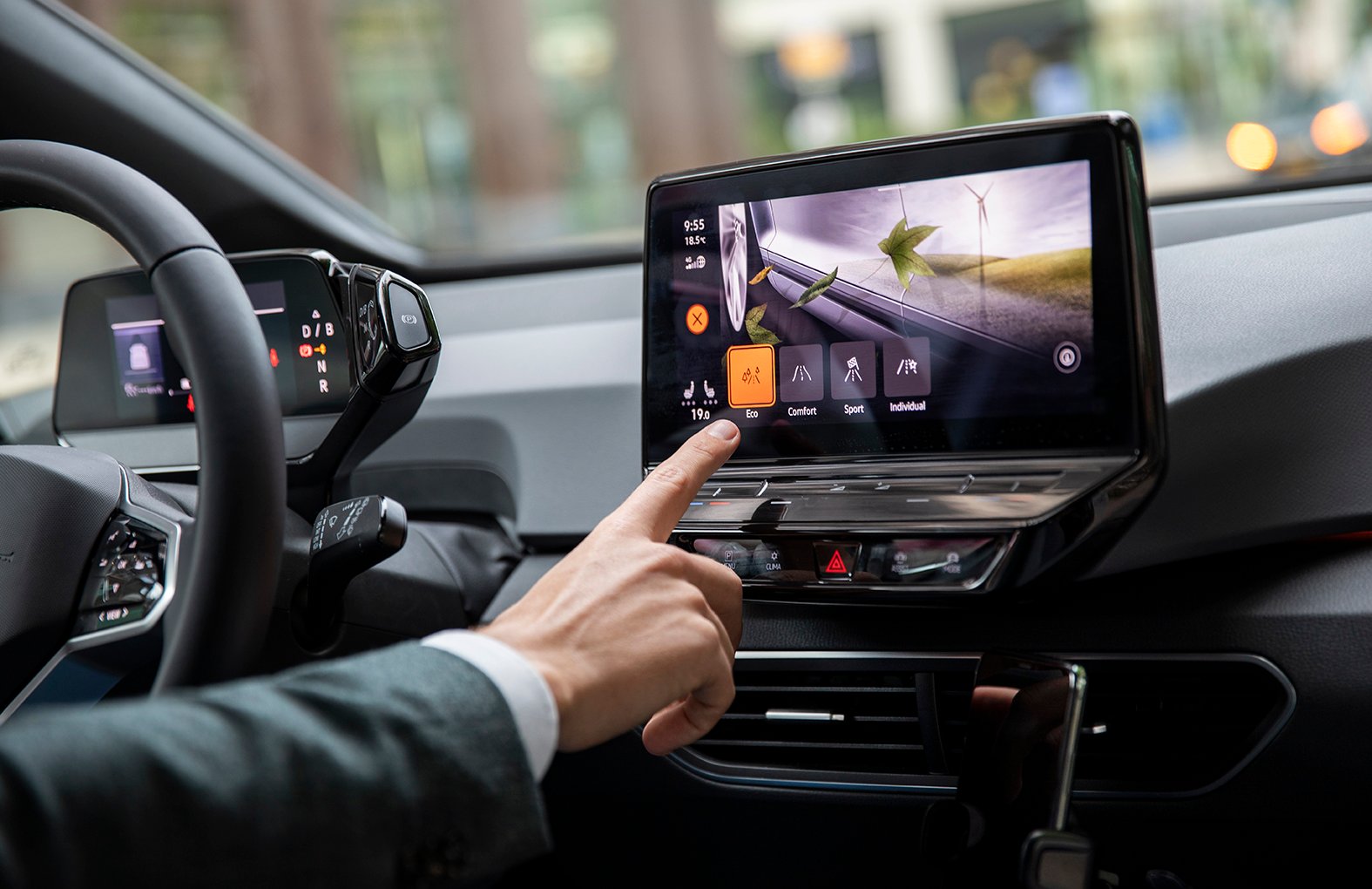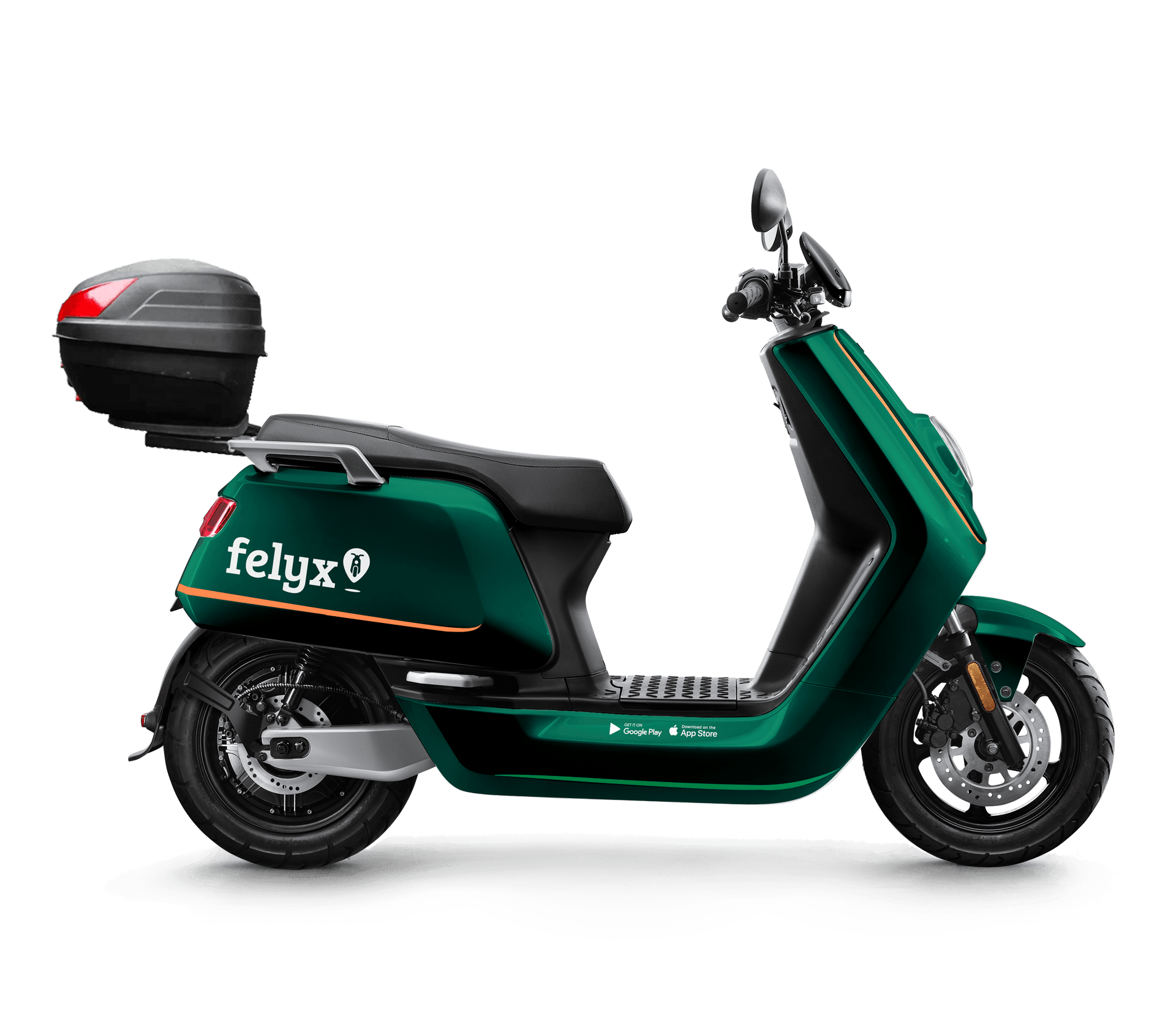MaaS in the Netherlands
MaaS adoption
Mobility as a Service (MaaS) aims to take stress out of multimodal travel, thereby reducing private car use and increasing transit ridership. Although the idea has been around for 15 years, it’s never really caught on. But now the Dutch are determined to make it happen, sparking an exciting competition among providers.
Mobility as a Service isn’t just an app that searches through all available mobility options and plans your journey according to your preferences: the quickest mobility mix, most comfortable, lowest emission, lowest number of transfers. It also takes care of the cumbersome formalities: booking rides, paying for them, and tracking overall mobility cost. It’s a personal mobility assistant that makes using multimodal transport as simple and relaxing as satnav has made using private transport. But what’s simple for the consumer is an enormous technical and organizational challenge for the businesses trying to realize it. For starters, all modes of transport, from public trains, buses and trams, to bike, moped and car sharing plans must be integrated into one application.
Cooperation and competition
To start the ball rolling, on November 9, 2017, the Dutch Ministry of Infrastructure and Water Management issued an open letter for a market consultation. And in May 2019, a workgroup convened to develop an open standard: the TOMP-API (Operator to Mobility Provider – Application Programming Interface). This interface should make it easier for the mobility- and MaaS-providers to communicate with each other. The ministry called for seven pilot projects. The first one, Gaiyo in the city of Utrecht, was launched on September 17, 2020. Arriva, a Deutsche Bahn subsidiary running some of the trains, trams and buses in the Netherlands, won two of the other pilots: in the provinces of Groningen/Drenthe and Limburg.
Open data sharing
Arriva launched its MaaS-app called Glimble for these pilot regions in August 2021. Immediately available for the whole country, it was developed together with Moovit, a major MaaS player worldwide, according to Arriva’s Martijn van de Weijer, who is director of the Glimble project: “They have the experience,” he says. All public transport has been deep integrated into the app, meaning Glimble can perform all the planning, booking and paying. The traveller uses just this one app to access all the transport modes needed for the journey. Surprisingly rival train and bus operators didn’t decline facilitating Arriva’s MaaS-app. “The government has prevented that by obliging everyone to make their data available,” van de Weijer comments.

Operational data that is, personal consumer data will not be shared, since this information is protected by the EU-wide General Data Protection Regulation (GDPR). Amber shared cars, and Urbee and Hopperpoint shared bikes will soon be deep integrated as well. Uber and more than half a dozen other mobility providers have only been deep link integrated, meaning that if the traveller wants to use any of these, he’s forwarded to the mobility provider’s app. But Van de Weijer states: “We’re working on further improvement and development. Every few weeks we release new functionalities or integrations in the app. We learn by customer feedback and with every new release, the app is evolving and expanding.”
“We’re working on further improvement and development. Every few weeks we release new functionalities or integrations in the app. We learn by customer feedback and with every new release, the app is evolving and expanding.”
- van de Weijer
National and international
Laws can make or break MaaS-apps. The Covid-19 pandemic, for example, caused a change in Dutch tax laws regarding travel expenses, which can help MaaS-adoption. “That change will cause a lot more paperwork for employers,” says Van de Weijer. “We can obviate that with Glimble. The employer can offer Glimble to their employees. Then they don’t have to buy, prepay and declare tickets anymore. And Glimble provides a travel summary for bookkeeping, with mileage, cost and CO2-emissions specified. The employer can choose which transportation modes to offer, for example excluding the car if there are sustainability goals. Pay is as you go, but we also have a post-pay option for employers: pay once per month for all traveling.”
The app will cater to the private car as well, aiding with parking and charging. And it’s been extended to work in the whole country. “Of course, we also want to cross the border with Glimble,” Van de Weijer says. “Our trains in Limburg cross the border into Germany and are already available in Glimble. Together with our German partners we’re working on expanding our cross-border functionalities. Arriva Group runs public transport in 14 countries.”
No wheels
Amaze, launched on October 1, 2021, is a MaaS-app by a provider that doesn’t have its own mobility. “We don’t have wheels on the ground,” says Amaze’s Karin Sijbring. “Our goal is to make flexible travel as simple as possible.” Again, some mobility providers are still deep linked, while others have already been deep integrated. “For example, you can directly book, use and pay for Donkey Republic bikes and Amber cars with our app,” says Sijbring. “And it allows you to directly buy tickets for trains, buses and trams, display the QR-code on the screen and check in with it. We also have a ‘Near me’-option: if your ride of choice has just left, you can quickly get an alternative.” A travel summary can be sent at the end of the month, and the app has been extended to cover the entire country. “The company was founded, triggered by the pilot to keep Zuidas, an Amsterdam business district, accessible,” Sijbring continues. “But you can’t serve Zuidas exclusively because people who work there live in the whole country.”
"Our goal is to make flexible travel as simple as possible.”
- Sijbring
Changing behaviour
The MaaS-app providers are competing heavily to create the best service, which can only benefit the traveller. Has a mobility revolution been sparked? “If you tell people what you’re working on, they’re generally excited,” Sijbring says. “But you do have to explain it: Amaze is more than a journey planner. You can book, buy and use public transport and shared mobility in the app. MaaS requires a change in behaviour. But not everyone can park in front of their house anymore, so shared mobility is stimulated in other ways as well. And then it’s very convenient not to have to look at five different apps.” “I had to get used to it myself,” Arriva’s Martijn van de Weijer comments. “I was used to planning my trip according to public transport departure times. Now, I can plan my journey by the time I plan to leave.”

More MaaS-apps
Others are getting into the MaaS-game as well. NS, HTM and RET (The largest Dutch rail company and the companies running trams and busses in The Hague and Rotterdam) together founded the company Rivier to commission Siemens to build not an app, but an integrated platform to build MaaS-apps on. “The Rivier platform connects MaaS providers with mobility providers and provides planning, booking, account management, id-verification and payment functionalities,” Siemens’ digital transformation officer for the Netherlands, Emilio Tuinenburg, comments. “But it’s up to the app builder of the MaaS provider which features to use and how to use them. They can for example choose to offer pay as you go or subscriptions.”
Rivier didn’t spring from the pilot projects. It will be rolled out in the entire country, with the option of extending it abroad. “The first apps will probably be by NS, RET and HTM as they requested the platform,” Tuinenburg comments. “But every app builder can build their own MaaS-app using our platform. We can provide a white label app for you, for example, but most mobility providers already have an app and would prefer to extend that to MaaS. For that they can use our facilities.”
Lowering barriers
Forty mobility providers have shown interest in being integrated into Rivier so far. “We’re integrating bike, moped and car sharing providers,” Tuinenburg explains. “And we expect to connect assets such as Park+Ride and electric car charging.” Private transport will also be integrated. “Then the customer can compare their own means of transportation with others, or the car can be incorporated into the journey,” Tuinenburg continues. “Lowering barriers this way will persuade consumers to use other modes of transport, so they don’t have to use
the car all the time.”
“We’re integrating bike, moped and car sharing providers, and we expect to connect assets such as Park+Ride and electric car charging.”
- Tuinenburg
The Rivier-platform is a flexible and ambitious plan, but Tuinenburg reckons it will be up and running soon: “We’ve been involved with this technology for a long time. Of course, the configuration is specific for the Netherlands, but the first apps could be available in the spring of 2022,” he says. So, it’s a question of may the best app win? “Yes,” comments Tuinenburg. “But I’m convinced eventually there won’t be just one app that appeals to everyone. You could need different functionalities for different target groups. An app that can do everything can be confusing. And the business market could prefer a different app than elderly people with walking difficulties, for example.”

Experience from Berlin
“We started in 2018 and have grown to 135,000 vehicles in 160 cities in 16 countries in Europe and the Middle East,” says Alexander Sprey, senior manager of strategic partnerships for Tier Mobility, a Berlin startup offering shared e-bikes, e-mopeds and e-scooters. He likes the approach of Siemens’ Rivier platform to MaaS. “Rivier isn’t an app, but an infrastructure MaaS-operators and mobility providers can dock onto: that’s good! We get many requests from MaaS-apps to integrate us. That’s a lot of work to figure out technical integration and contracts, and discuss finance, accounting and customer support.
“Standardization helps. One integration with Rivier and we’re integrated with all MaaS-apps that use the platform. It’s a promising approach. We’re already integrated into nearly 40 MaaS-apps worldwide. Our mission to ‘Change Mobility for Good’ is one we cannot achieve alone,” Sprey adds. “To create a better-connected tomorrow and change the mobility sector, we aim to connect our sustainable micro-mobility solutions with public transport by integrating them into local MaaS solutions,” he continues. “There are good local apps already: Jelbi in Berlin for example. Still, we only see a small percentage of our rides coming through applications like Jelbi. Why if it’s so convenient is customer adoption so low?”
“To create a better-connected tomorrow and change the mobility sector, we aim to connect our sustainable micro-mobility solutions with public transport by integrating them into local MaaS solutions,”
- Sprey
In other cities with MaaS-apps, Paris and Munich for example, Tier sees equally low customer adoption. That could be because travellers haven’t got used to it yet. But Tier has also identified that for a MaaS-app to be used, all available travel options have to be in there and they all have to be deep integrated. Because as Sprey says: “On average, our deep integrations generate 30x more ridership than deep link integrations.” (I.e., for MaaS to work everything needs to be in one app, not simply via links that send you do another app).
A mobility provider’s viewpoint
Felyx, a provider of shared e-scooters, doesn’t have its own MaaS-app, but is already integrated into the Amaze and Glimble apps. “We’re talking to various pilots and MaaS-providers,” says Felyx’s public affairs associate, Nigel van den Berg. “MaaS should make multimodal travel more accessible, so more people can abandon the car. It’s difficult to get people out of their cars. That’s our goal: so they don’t take the car into the city anymore. I do think MaaS still has a long way to go, but the Ministry took the right step by launching those pilots. And the TOMP-API should help. The challenge is always to have systems communicate with each other and make good agreements about who’s responsible for what.” Felyx was founded in 2016 and placed the first 100 scooters in Amsterdam in 2017. Now they have 6,000 scooters in 12 cities in the Netherlands, Belgium and Germany.

“MaaS should make multimodal travel more accessible, so more people can abandon the car. It’s difficult to get people out of their cars."
- van den Berg
Share your story
Do you have an innovation, research results or an other interesting topic you would like to share with the professionals in the infrastructure, traffic management, safety, smart mobility and parking industry? The Intertraffic website and social media channels are a great platform to showcase your stories!
Please contact our Sr Brand Marketing Manager Carola Jansen-Young.
Are you an Intertraffic exhibitor?
Make sure you add your latest press releases to your Company Profile in the Exhibitor Portal for free exposure.
Get up to speed on the mobility industry - our newsletter straight to your inbox!


